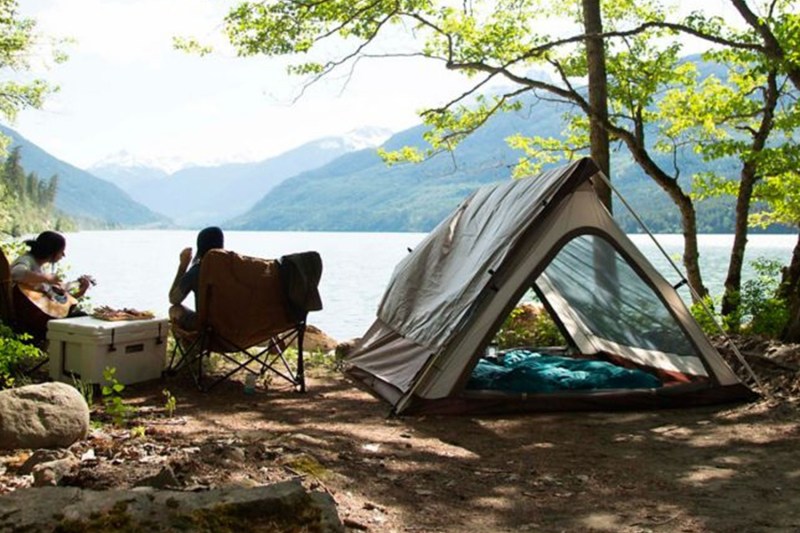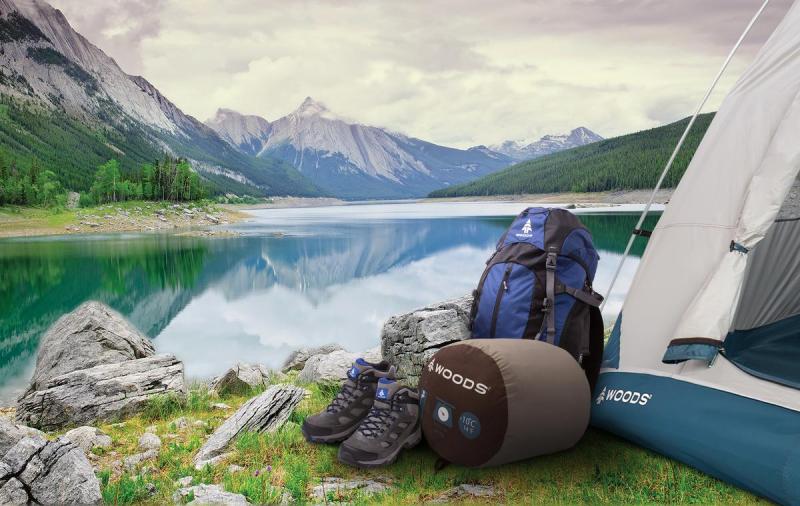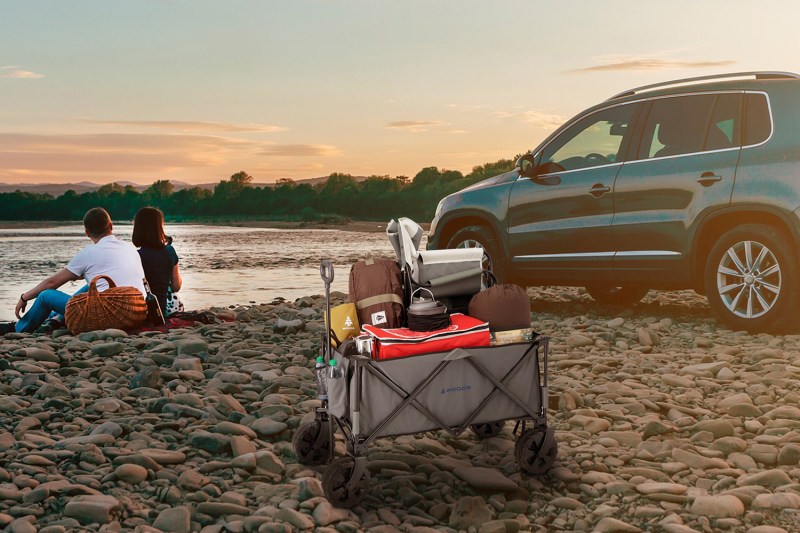
Sitting in the woods during a slow Southern spring, I have to acknowledge how well Woods outdoor gear holds up. Granted, it’s laughably overbuilt for such a soft-serve situation, the skies clear and the forecast is calling for a cloudless night. Founded almost 150 years ago in the Canadian hinterlands and worn on the backs of some hard men in harder climates, 60-degree Nashville evenings are a family reunion volleyball game in comparison. But this isn’t supposed to be a dirtbag review on how well its outdoors gear wears after 2,000 miles on the Appalachian Trail. These thoughts are designed around how well it holds up in everyday life. On how well it might perform over your car-camping weekend. On what to expect setting it up around a socially distance backyard fire pit. In short, if you’re planning for a major expedition, you’ve reached the wrong evaluation (and definitely the wrong writer, who prefers indoor plumbing more often than not). But if you’re looking for how a few pieces might fit into your upcoming summer, which might include a few jaunts to the nearest state or national park — well, have I got a company’s offerings for you.
Woods was founded in Ottawa in 1885, and its own lore will tell you about traverses across the Northwest Passage, summits of mountains that sound vaguely familiar, and even the outfitting of the 1982 Canadian team who first topped Mt. Everest. As a result, its most famous products were sub-zero parkas and Arctic sleeping bags. It’s very impressive and the sepia-toned photos must look very noble. But in the 21st century, what use does a core outdoors brand have in the back of your Subaru come Memorial Day weekend? The answer is more than you might think.
There’s a classic phrase about hunting a mosquito with a bazooka, implying that you’ve overreacted to solving the situation’s problems. But when it comes to camping — and especially camping when the weather goes south — there’s only one reason to not plan for the worst, and that is foolishness. Put another way, it’s one thing to endure hardship or type-two fun, but why do it if you don’t have to? Furthermore, it’s asking even more for, say, a significant other to “enjoy” the same. Pony up, and buy something you know won’t blow over in a strong gale or leak like a sieve with the first salvo from rainclouds.

The first item I selected from Woods was its A-Frame Three-Person Tent, which looks rad. I mean, if you’d pulled this from your grandparents’ tchotchke-packed garage, from a distance, I wouldn’t be able to tell the difference. As its name suggests, it’s the quintessential “camping tent,” as one thinks of them with no prior experience. Up close, however, there are plenty of modern upgrades. Its interior is cut from a water-resistant synthetic fabric sewn to a fine insect-proof mesh, which would repel a horde of Maine’s worst mosquitos. A seam-sealed bathtub ensures that unless you’ve pitched camp in a meadow of thumbtacks, it will withstand plenty of mud while you slumber, dry, above.
Its second-biggest strength is its assembly. If you have ever even once, pitched a tent, you will sleepwalk through the A-Frame’s setup. (If not, instructions are helpfully sewn into its carry bag.) But its greatest strength is its poles, literally. Modern tents feature lightweight, fishing-pole-like sections that can chip, break, or fail in myriad other ways. Sure, they’re lightweight, but at what 2 a.m. cost? Woods makes outdoor gear for Canadian men who don’t live in Toronto, which means it’s not afraid of a couple extra pounds of weight. So its tent uses very robust aluminum sections, which slide together with a satisfying clink. (No, not like a wine glass. Like the background noise of a Detroit car factory.) This is not an ultralight backpacking tent. This is much more a car-camping structure, though it should be noted that it’s not that much more than a backpacker tent, all things considered. Finally, an honorable mention must go to its size. While it claims it’s a three-person, anyone who’s ever been in a three-person tent will tell you that two adults will be rubbing shoulders. The A-Frame’s interior is nearly eight feet by eight feet, and we’d bet three people would be well and truly comfortable, if it came to it. You can certainly fit your dog.
Beyond its tent, I’ve become a fan of two of its camping chairs, but for different reasons. Let’s say you’ve begged and wheedled and finally bribed your partner to camp for a weekend. He or she should be rewarded with the company’s Mammoth chair. As its name might suggest, this is the chair for expansion. The massive padded fabric slides onto a collapsible frame that expands out of its carry sack, and while nowhere in its description does it claim to be couple’s furniture, it is rated to 400 pounds. If not for two, then explain why it’s rated so high. (Admittedly, it may be an over-engineering mistake due to an improper Imperial-to-Metric conversion, but we’re not going to look a gift horse in the mouth.) For those looking to placate a snuggle bunny, this is it.

But if it’s been a long few days before the weekend in the woods — the boss was up your butt with deadlines and Death by Zoom Meeting — then your chair is the Siesta. It requires no assembly, simply unfolding on the nearest semi-level area and then providing three different reclining positions to match your level of stress. It is the ultimate in fire-gazing furniture, and it doubles equally well on a porch or balcony when you return to garrison.
Most of Woods’ gear straddles the above lines: thoroughly overbuilt for the occasional camper but with a solidity that’s nice to have just in case. Granted, most people won’t want to hike it in. But the reality is that most people aren’t hiking their gear in. They’re backing in to their campsite, opening the bed or the hatchback, and pulling pieces for a distance of five feet to the weekend’s home away from home. Are you the type who weighs his food and trims the corners off his sleeping pad prior to setting off on the Hundred Mile Wilderness? Well, then this stuff isn’t for you. But if you’ll looking for reliable gear that’s built to withstand an Arctic expedition, have we got the Canadian outfitter for you.




